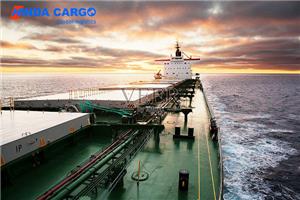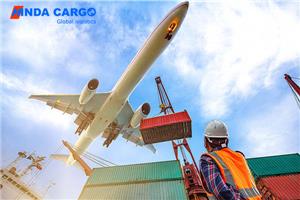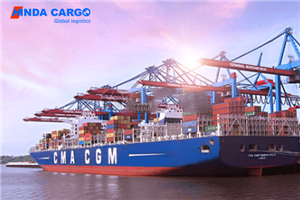China Railway Express
In the post-pandemic era, global supply chains are at risk of disruption. The China Railway Express has risen against the trend, leading to a "bond of destiny". Since the outbreak of the epidemic, shipping containers have been stranded in overseas ports, and domestic "one container is hard to find", the number of shipping routes has decreased, and shipping prices have soared. On the contrary, the China-Europe freight train has bucked the trend. The shipping was blocked, and the China-Europe freight train solved the urgent need of China-Europe trade logistics and transportation. The rise of the China Railway Express against the trend is due to its safer and more efficient advantages compared to sea and air transportation. The China-Europe freight train implements segmented transportation, changing drivers and fronts at the borders of various countries along the way. The driver does not cross the border and does not involve personnel quarantine. The transportation time of the train is only one-third of that of the sea, and the current price is comparable to that of the sea, and the efficiency is higher.
At the same time, the explosive growth of freight volume has also brought many challenges to the China-Europe freight train. Due to the transfer of a large amount of goods by sea, the China-Europe freight train has also experienced a shortage of space, and the sharp increase in freight volume has also begun to cause congestion at ports along the line, and the time limit of the train has been affected to a certain extent.
China Railway Express is further improving service quality, reducing operating costs, and enhancing brand competitiveness and influence in the international logistics market. The future China Railway Express will become an international logistics chain with complete infrastructure, more market competitiveness and brand value, and will play a more important role in maintaining the stability of the global supply chain.
Like many things happening in China, there are many changes in the China Railway Express every year. Since the first freight train departed from Chongqing nine years ago and arrived in Duisburg, China-Europe trains have experienced rapid growth in the past nine years, especially in 2013 when Chinese President Xi Jinping first proposed the "One Belt, One Road" initiative. After the initiative and in 2016, China Railway first unified the name of the local trains as the China-Europe trains. In the past 9 years, China-Europe trains have operated more than 20,000 trains. Last year, the number of trains in 2019 reached 8,825, including about 5,800 trains between China and Europe, and 2,400 trains between China and Russia and Belarus. The top four cities with the largest number of banks are all located in central and western China. They are Xi'an, Chongqing, Chengdu and Zhengzhou, accounting for about 70% of the total number of banks in the country.
Needless to say, the main driving force behind the rapid growth of China-Europe freight trains for several consecutive years is the subsidies provided by various parts of China. While subsidies have become the driving force of China-Europe freight trains, they also increase the uncertainty of the future development of the project. Obviously The question is where the China Railway Express will go after subsidies start to decline and even stop one day. The Chinese central government has issued a series of documents, such as the "China-Europe Railway Express Construction and Development Plan (2016-2020)", and the Ministry of Finance, starting from 2018, requires local governments to reduce the subsidy standard for China-Europe Railway Express: based on the whole freight rate, subsidies in 2018 No more than 50% of the shipping fee, no more than 40% of the subsidy in 2019, and no more than 30% in 2020. This year's new crown epidemic has undoubtedly changed a lot, including this year's subsidy retreat plan. This year, the number of China-Europe trains is still growing rapidly. In the first half of the year alone, the number of trains has exceeded 5,000. This number is astonishing, because the entire country has been in the phase of lockdown and shutdown during the epidemic prevention period for about 3 months.
There are a series of reasons behind the growth, including the reduction of sea and air transport capacity, which has caused some sources of goods to flood onto the railways, including urgently needed medical supplies during the outbreak; and a series of logistics and production resumption measures launched by China during the resumption of work and production. Temporary measures, including waiving tolls for trucks on the highway, alone can reduce door-to-door pickup costs by an average of about 30 percent.
Overall, support at the political level was the main driver of the project. From the level of the central government, the China Railway Express is an important preliminary project of the Belt and Road Initiative, representing the Chinese government's understanding of connectivity. As a public logistics product promoted by China to provide countries along the Silk Road Economic Belt, the China Railway Express also represents the Chinese government's development concept of openness and inclusiveness. From a local level, the China Railway Express project is regarded as a sign and an important starting point for further reform and opening up. Therefore, from the central to the local, the China Railway Express will still receive huge policy support.
However, the new crown epidemic did have an impact on the development of China-Europe trains. The lockdown measures adopted by European countries for epidemic prevention have brought challenges to the organization of supply sources between China and Europe, especially the supply of return goods. In the first half of this year, about 2,000 freight trains arrived in Europe from China, but only about 900 returned. In fact, the Russian business was the main growth point in the first half of this year. The total number of outbound and outbound trips exceeded 2,000, far exceeding the level of the same period last year. The unbalanced number of trips between China and Europe has brought huge operational pressure to the carriers of the wide-gauge section. The wide-gauge section of the car board cannot be turned over from the EU border back to the Chinese border in time, which means that the containers exported from China to Europe are in China and Kazakhstan. The Alashankou/Dostyk port at the border will have to wait days to weeks before being refitted, and this has created congestion at the Chinese ports. Therefore, starting from June this year, China Railway had to start to control the plan of the China-Europe freight train to Alashankou/Khorgos port. Therefore, this year's congestion is not due to a sharp increase in the number of open lines, but due to the increase in the imbalance between China and Europe. According to the data of United Transportation and Logistics Company (responsible for the overseas wide-gauge section of the China-Europe train in Kazakhstan, Russia, and Belarus, hereinafter referred to as UTLC), the ratio of freight trains to and from the broad-gauge section of Kazakhstan last year was about 45%. %, and this year the figure dropped to 35%. In the context of the lack of European return sources, in order to turn the wide-gauge sections of the EU border back to the Chinese border, UTLC has launched a preferential freight rate designed to encourage Chinese platform companies to return their empty containers stranded in Europe. . However, this measure did not work, because China does not provide full freight subsidies for empty container transportation, nor does it provide rail freight reduction for China's domestic section. As a result, a considerable number of empty containers were transferred from Europe to Siberia, where they were loaded with wood and returned to China. And such a route completely bypasses the Brest (EU border) to Alashankou/Dostyk route, which does not help the turnover of the car board.
In the European section, severe congestion also occurred at the Brest/Mara border, also due to the poor turnover of the trains in the European section. Containers arriving at the EU border also have to wait a week to two weeks before being reloaded on the European segment. To bypass the congested Brest/Mara ports, the market is looking for new ports of entry. For example, UTLC has launched the Kaliningrad channel, which has certain advantages in attracting supplies to northwestern Europe.
(Railway bridge over the Bug River between Terespol, Mara, Poland and Brest Centralny, Belarus, all Central European trains via Brest/Mara pass through this bridge)
To the south, the transit route via Ukraine has regained market attention. On September 25, witnessed by the Presidents of Slovakia and Ukraine, the Minister of Transport of Slovakia and the Minister of Infrastructure of Ukraine signed a memorandum of cooperation aimed at developing multimodal transport between Asia and Europe via Ukraine and Slovak territory. From September this year, weekly trains will be sent from Xi'an to the Slovak city of Dunajská Streda via Dobrá, the border port of the two countries.
This is an important step in Slovakia's attempt to integrate it into the China-Europe freight train project, which provides Chinese customers with a new channel into Europe, with direct access to the Central European region.
It should be noted that the opening of the new channel of the China-Europe freight train still cannot avoid the problem of balancing the return journey, especially when the shipping becomes normalized, otherwise the overseas carrier will have to include the cost of the turnover of the empty car board in its one-way transportation. in the quotation.
Overall, the main destinations of China-Europe trains in Europe today are Duisburg, Hamburg, Mara and Lodz, and the trains to these places account for about 55% of the total travel between China and Europe (excluding Russia and Belarus). %. Another about 10% is to the northwest of Europe, such as Nuremberg, Tilburg and Ghent. Therefore, a total of about 60% to 65% of the volume is bound for Northwest Europe and Poland. This explains why there are so many trains going there even though Brest/Mara is so congested, because there are very convenient rail and truck connections from Mara to Germany. At the same time, Brest is also the main transit port of the international transshipment channel planned by the Russian Railway, and there are many return trains to Russia and China from here.
Therefore, three factors should always be considered when opening a new channel for China-Europe freight trains to enter Europe: the throughput capacity of the new port terminal itself, the connection capacity of the rear section of the new port, and most importantly, whether the new channel can be found to match The return source of the car board turnover. In other words, whether the new ports can be normalized cannot rely solely on the existing supply of goods to Germany, especially for the new channels located in the south of the EU border, because they are farther from Germany than horses and connected at the back. The capacity and return source of goods are not even as good as the horses.
For the new channel to be normalized, the local market adjacent to the new channel must be developed. For example, in 2019, Slovakia imported about 3.25 billion US dollars of goods from China and exported about 1.89 billion US dollars of goods to China. A large number of commodities in bilateral trade between Sri Lanka and China are transportation equipment and mechanical and electrical products. Slovakia is also an important automotive production base in Europe. And these goods are, without exception, ideal sources of goods for China-Europe freight trains. Needless to say, Slovakia can also serve as a gateway and transshipment center for the wider Central and Eastern European market.
Why is the European market so important for the China Railway Express? Today, more than 90% of the transportation between China and Europe is by sea, and most of the trade methods are settled at FOB prices, which means that European customers decide which transportation method to use, which freight forwarder to choose and pay the freight. Today, about 70% of China's exports to Europe and about 50% of China's imports from Europe are the same. This means that the main market for China-Europe freight trains in the future should be in Europe, not in China. At present, the main users of China Railway Express are still small and medium-sized enterprises in China. Some European customers have also started to use the China-Europe trains to transport their goods, a considerable part of which are high-value commodities, such as notebook computers, electronic devices, commercial vehicles, industrial parts and fashionable fast-moving consumer goods. But overall, this part of the volume is quite small. The overall volume of the China Railway Express itself is also insignificant, and its contribution to the bilateral trade between China and Europe is too small. According to data released by Eurostat, the total bilateral trade between China and the EU-27 reached US$717.86 billion in 2019, of which China’s exports to the EU-27 were US$468.4 billion and the EU-27 exports to China were US$249.46 billion. In the same period, according to incomplete statistics, the value of goods transported by China-Europe trains (excluding Russia and Belarus) did not exceed 15 billion US dollars, and its contribution to China-EU bilateral trade was only about 2%. If calculated according to the transportation volume, it shall not exceed 1.5%. From this point of view, the market of China Railway Express still has a very broad room for growth.
So the question is how can the China Railway Express benefit more European companies? Officials in the city of Duisburg are now rejoicing about the China-Europe freight train, as more than 30 freight trains from China arrive in the city every week, creating more than 6,000 jobs and handling more than 100,000 passengers per year container. However, the development of China Railway Express cannot only benefit these railway companies and stations. Manufacturers and other industrial and commercial players should also benefit from the development of China Railway Express, reshaping their supply chains and accelerating their capital through faster railway transportation. Turn around to gain more business opportunities with China and neighboring Asian countries.
Stability should be the most important thing for these customers - stable price, stable departure time, stable timeliness, and trains can only be dispatched when goods are not available.
To this end, China and the EU should work together to eliminate congestion and improve the stability and efficiency of train operation, so that the train can attract those high-end users. Compared with price, they value fixed departure time, stable transportation time and more professional and smooth communication. Chinese policymakers should realize that the unbalanced supply of goods between China and Europe is limited by the bilateral trade structure between China and Europe, and the return of empty containers is inevitable from a certain point of view. China and the EU should jointly take action and formulate policies on the return of empty containers from Europe, so that empty containers and empty carts can be effectively circulated between continents. In addition, European countries should further reduce the transportation cost between Europe and develop the European market, which is crucial to the future development of China-Europe freight trains.
In short, the sustainable development of the China Railway Express in the future is not only the responsibility of China, but also requires the participation of Europe. As the world's responsible major economies, China and the EU should turn their declarations into actions and join hands to usher in a new era of development, so that both sides can share the fruits of sustainable development.




